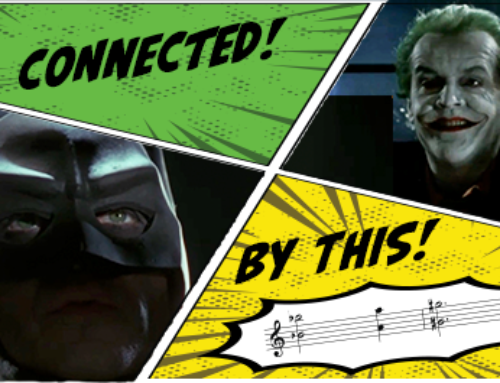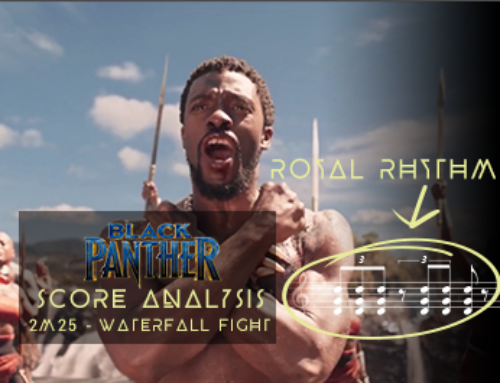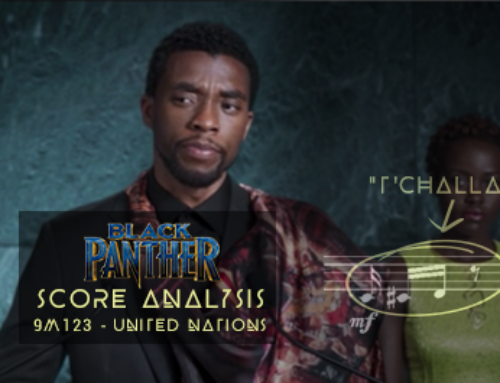SPOILER ALERT: While these movies have been out for a while, massive plot leaks are shared here due to the nature of the conversation.
In a special Halloween edition of Cue the Music, I talk about some death scenes that I think were scored brilliantly. This is by no stretch to be considered “the top most memorable death cues,” but rather a few that I think were done exceptionally well when considering all aspects of a film. Because my focus is heavily on music’s influence on a scene, I did not consider scene’s that did not have music. Listen to the spotify playlist while you read, or watch the youtube links that accompany each of the 5 submissions. Enjoy!
“Rue’s Farewell” by James Newton Howard
In the entire arc of The Hunger Games’ storyline, one can argue that no death was more important than Rue’s to the franchise. At just 12 years old she represents the innocence of children and how disturbing it is that The Hunger Games exist. About half way thru the film, shortly after Katniss realizes that Rue never made it back to the check-in point, she hears Rue scream for help. Katniss releases Rue from the trap, and as Rue warns Katniss that Marvel is behind her, Marvel strikes Rue with a spear as Katniss kills Marvel. As Katniss comforts Rue with a lullaby as she dies, James Newton Howard’s “Rue’s Farewell” cue starts peacefully. Howard lifts the film to its musical peak, and helps the viewer through an emotional turning point as the film cuts to the uproot happening in Rue’s home district that sets the tone for the rest of the movie and series.
“The Murder” by Bernard Hermann
Alfred Hitchcock’s “Psycho” has to make the list. Bernard Hermann, known for his collaborations with Hitchcock, ignored Hitchcock’s suggestion to leave music out of this famous murder scene about 40 minutes into the movie. Instead, he delivers drama by using screeching strings that augmented Marion’s cries for help as she was being murdered by Norman Bates. The spotting of this scene is masterful. The absence of music before and after the murder assists the audience in understanding the isolation of both going in for a peaceful shower, as well as Marion’s death as her body is stretched motionless in the shower. As a side note, this scene is arguably one of the first and the most famous cases of a “false protagonist.”
“Coffey on the Mile” by Thomas Newman
Thomas Newman’s mastery of nuanced instrumentation really was the perfect fit for this movie. Towards the conclusion of Frank Darabont’s “The Green Mile,” we see a distraught team of correctional officers have to follow through with the execution of John Coffey, someone they know to be innocent. Over the course of the film, we learn how delicate and special Coffey truly was despite his enormous stature, and perceived reputation. Thomas Newman plays on this delicacy almost immediately as the cue starts by introducing the flute, high strings and other soft instruments as Coffey reminds the correctional office, Paul, that he is afraid of the dark before his execution. From this moment on, music takes the lead role in this cue, emotionally building the music up to and through the execution, only making way for key dialogue.
“…To Die For” by Hans Zimmer
I had to include “The Lion King” on this list, since it was one of the first soundtracks I fell in love with. As a kid, I remember seeing Disney’s Academy Award-winning movie in the theatre and crying as Mufasa died. Animation isn’t typically known for these darker anchor moments, but “The Lion King” carefully and brilliantly acknowledges the subject of death despite its core audience being children. About 30 minutes into the film, Hans Zimmer, composer of “The Lion King” starts his cue “…To Die For” that takes us on the tragic storyline of Mufasa’s death. We immediately jump into high energy music to match the energy of the stampede, and Simba runs for his life. The use of what I’m dubbing the theme for Pride Rock and the theme for loss, perfectly symbolize the concept of the circle of life. In his genius, Zimmer delivers this emotion in the style that reminds me of some of the great requiems that have been written by composing greats. This cue never gets easier to watch, and now as a father, the cue hits a whole new level of emotion. Bravo, Disney.
“Aeroplanes” by Max Steiner
Music served an even more critical role in the Golden Age of Hollywood. Music had to push the story along sometimes filling in the role for dialogue, scene transitions, sound effects and more. Max Steiner was beyond his time when it came to understanding how to intricately score a film. Towards the end of the 1933 monster movie classic, “King Kong,” Steiner is challenged with some of the aforementioned tasks as we reach the climax when King Kong has scaled Empire State building with his love Ann Darrow in hand. Steiner delivers a musical score that not only matches the sheer size of the scene, but tastefully adds sound effects such as for when King Kong falls.
Again, this is not a top 5, and in fact I invite you to leave a comment about ones that you consider were done well. Would love to hear your feedback, so we can continue adding to this list, and perhaps feature a few more next Halloween!






Great and diverse selection!
Thanks so much! Stay tuned for more!
Fantastic selection of music. To me what makes a movie is the music.
Thanks so much! Music certainly has a way to tell a story without a word or image. When film and music communicate together in sync, it’s pure magic.